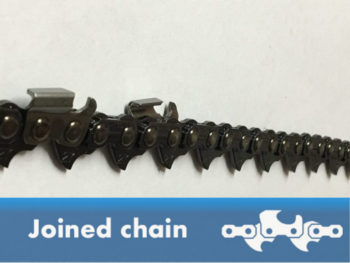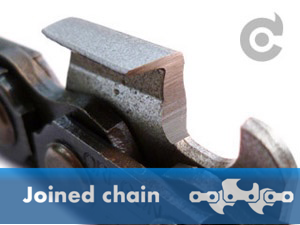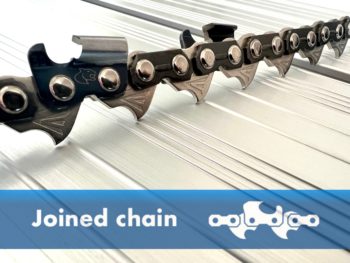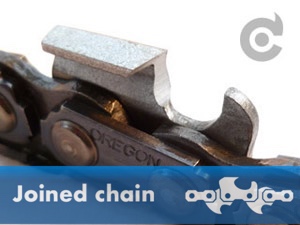Specialised ripping chain from Oregon this Full Skip chain has x1 extra gap between each pair of teeth. This helps keep chain speed higher when using a longer bar with a longer saw. This gives a smooth even feel to milling timber.
‘A skip chain has fewer cutting teeth than a conventional chain which means it won’t be dragging as many teeth through the wood you’re cutting. Less drag on the chain means less power is needed to cut through the log. That means the motor on your saw runs faster which keeps it in a more efficient power curve. It’s the same principle you use when downshifting a transmission in your truck to go up a steep grade. You get more power by increasing the engine speed. ‘ Steven Gregersen USA
Madsens have some great info on chains so check the differences by clicking here.
Pros
- Milling is smoother and more forgiving
- Longer bars can be used with smaller powerheads as the strain on the powerhead is reduced
- Less teeth to sharpen
Cons
- There are fewer teeth but correct sharpening procedure becomes even more important
‘Which is the best ripping chain – the Granberg? The Stihl RCX? or the….’
Horses for courses – there is no ‘best’ same as there is no ‘best’ car, or ‘best’ golf ball etc etc. There is only what’s best for you! So if in doubt – buy different brand chains and different makes and find out what works best for yourself.
Or why not buy a reel of chain [click here] and our breaker and mender package [click here]


 text or whatsapp us
text or whatsapp us  orders@chainsawbars.co.uk
orders@chainsawbars.co.uk
 sign me up
sign me up basket
basket ![27RA Oregon Full Skip Ripping Chain .404 .063[1.6mm]](https://www.chainsawbars.co.uk/content/uploads/27RA-Oregon-Full-Skip-Ripping-Chain-.404-.0631.6mm.jpg)



